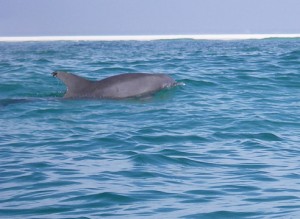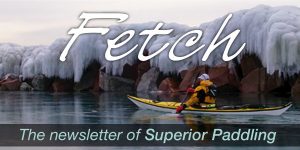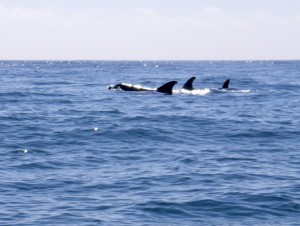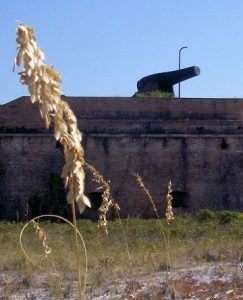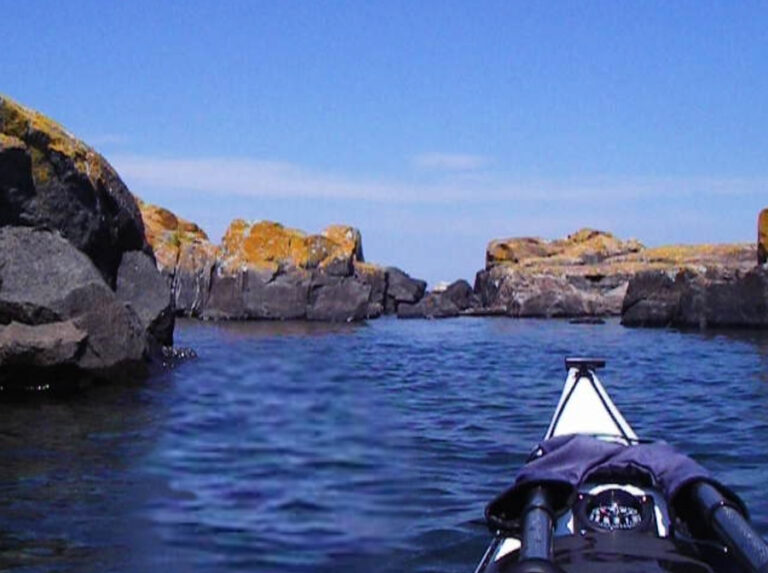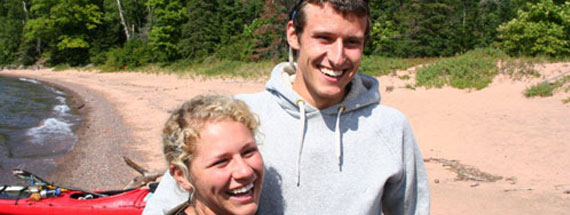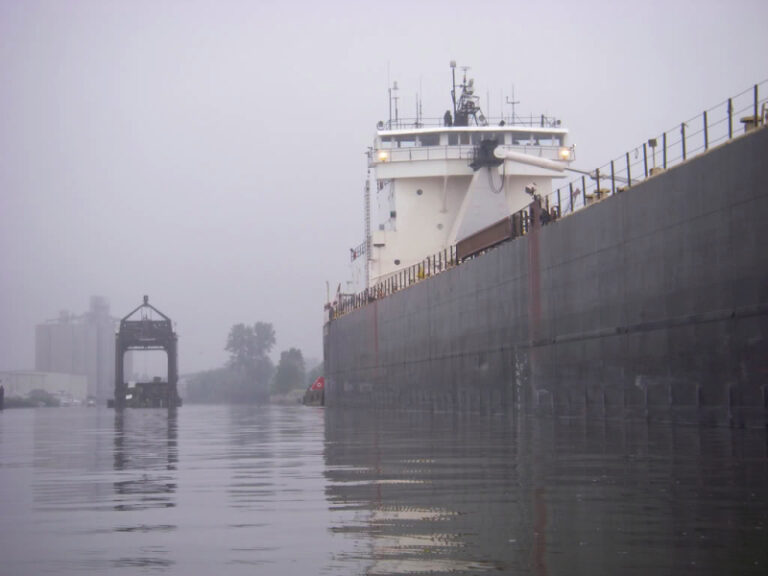A saltwater cruise along Florida’s Gulf Islands National Seashore to historic Fort Pickens
I had high hopes for a recent trip to Florida’s Gulf coast for a week of vacation at a friend’s rental place. My wife, Lorie, and I had driven down from Wisconsin with the kayaks on the roof, hurrying to escape the first of the season’s snow flurries and hoping to enjoy a southern extension of autumn.
But the weather was spotty and by midweek we’d only been out kayaking once, on a backwater Gulf lagoon. The inland river we’d planned to paddle was too shallow for sea kayaks, the local hiking was a bit underwhelming, and the seaside aquarium turned out to be somewhat seedy and had already drained their dolphin tank for the season. I had squandered too much time sleeping in late and lounging, and I felt my hard-earned vacation hours slipping away through my fingers. So Wednesday found me feeling unfulfilled, restless, and being a bit surly.
The weather cleared the next day, so when Lorie said she needed some time for walking and relaxing on the beach and suggested I go paddling, I was out the door faster than she could grab her flip-flops and a good paperback.
We drove to the end of the road and unloaded my kayak and gear. A mild Gulf breeze tossed moderate surf up onto the white-sugar sand beach, but I was able to punch out with only a couple of facefulls of seawater, and turned westward along the shore.



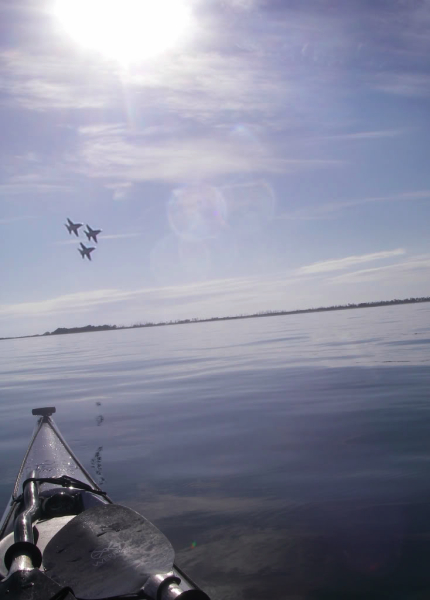

Pensacola Beach, Florida, is situated on Santa Rosa Island, a natural barrier island in the Gulf of Mexico. Imagine a low sand island a thousand feet wide and 45 miles long. A couple of large bridges connect the island to the mainland, with a road running its full length. Seven-thousand-dollar-per-month condos, ostentatious mansions, and overpriced restaurants now encrust much of this island, all built on the proverbial shifting sands of what was once a pristine paradise. There’s hardly a spot left for a Snowy Plover to scratch a hole and lay her eggs …
My destination that day was pre-Civil-War Fort Pickens, located on the preserved and undeveloped western end of Santa Rosa Island and normally accessible by car. But in 2004 Hurricane Ivan swept up out of the Gulf and buried long portions of the road under several feet of sand. The bulldozers were nearly done clearing it in July 2005 when Hurricane Dennis tore it all up again. They’ve just begun removing the sand once more and hope to be done by next spring. Until the next time.
For now, the only way to reach the historic Fort Pickens is to hike or bike the seven miles of sand-covered road, or via boat. Needless to say, I chose the latter.
I got a gentle push from the incoming southeast ocean swell, and actually skirted a little closer to shore in order to take advantage of the surf. Gulls and pelicans soared overhead in the briny sea air, and schools of flying fish sprang up to skitter over the water across the bow of my kayak. Large ripples in the water drew my gaze, and a sea turtle as large as a pub table dove and paddled away.
Sign up for “Fetch,” the newsletter of Superior Paddling!
Be the first to know about new or featured how-to articles, product reviews, and destination trip reports, plus other sea-kayak events, news, and more.
But I soon spotted some strange curling waves farther out, and I paddled closer only to realize that they were in fact the dorsal fins of large fish breaking the water’s surface, perhaps sharks? Pairs of large fins sliced and dove, steadily moving toward me, and I grew increasingly worried until I heard and saw the singular air ‘blows’ of a mammal, and realized they were dolphins.
Six or eight of them swam along in pairs, diving and surfacing all around me, only a couple of boatlengths away, then disappeared almost as soon as I could raise my camera. Having never seen a dolphin in the flesh, I was most surprised by the sheer size of these sleek and beautiful sea creatures, which ranged from five to ten feet in length, and can weigh anywhere from 300 to 1,400 pounds.
Three smaller dolphins, perhaps juveniles, shyly emerged to peer at me curiously, flicking their tails at one another like nervous schoolkids, and the entire pod kept pace with me along the sandy shore, as if inviting me further out into their marine realm. But this land mammal’s composite paddles were no match for fins and tail, and I gradually fell behind the pack and was again left alone.
I soon arrived at the western point of Santa Rosa Island, where Pensacola Bay, contained behind the island, empties into the Gulf. Each day, the top foot and a half of water in this 150-square-mile bay must empty out into the Gulf upon the ebb tide, through a narrow pass only a half-mile wide, then back in on the flow tide. So the current here can be considerable. From the tide chart, I knew I’d be riding the peak tidal flow into the safety of the bay today, but I proceeded with caution nonetheless, and there was indeed about an eight-knot current. The water roiled and churned through the narrow channel, and I braced to stay upright in the spiky water. Rounding the point and swinging eastward, the water calmed and I put ashore in the hook of land on the north side of the island and walked up into the fort grounds.
In the days of wooden sailing ships, the abundant live oak trees lining the shores of Pensacola Bay were considered a valuable resource for the United States Navy. A shipyard was built here—the origin of what would later become Naval Air Station Pensacola—and a handful of military forts to protect it, Fort Pickens being the largest and offering the most commanding views of the Gulf and the narrow channel into the Bay. Its construction, beginning in 1829, was overseen by the U.S. Army Corps of Engineers’ Colonel William Chase, and was completed in 1834.
Fort Pickens saw service through the Mexican-American War, then was largely abandoned until the Civil War broke out, when it again housed Union soldiers. Several Confederate attempts were made to attack and seize the fort, at least one of which ironically was commanded by Colonel Chase, the very man who had built the fort for the Union thirty years earlier!
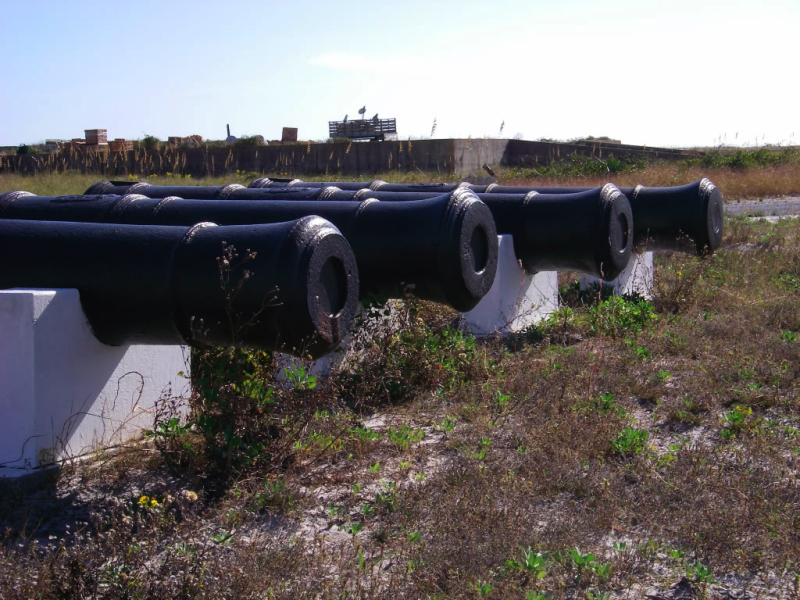



Now managed by the National Park Service as part of the Gulf Islands National Seashore, Fort Pickens serves as an open-air museum of an historic chapter of our national heritage. Visitors may stroll the old grounds, buildings, and brick and concrete artillery fortifications, and with no road access presently, Fort Pickens is perhaps even more lonely and quiet than in its heyday.
After a quick lunch break, I launched again and proceeded eastward in the glass-calm waters of Pensacola Bay. A sudden thunderous roar called my attention skyward as a delta formation of three Navy F/A-18 jet fighters streaked overhead, pursued by two more. The nearby Naval Air Station Pensacola is home base for the Blue Angels flight demonstration squadron, which spent the next hour practicing aerial maneuvers over the bay in preparation for their annual homecoming show the following day.
Finally turning and resuming my paddle, I spotted what looked like a large plastic baggie just below the water’s surface. Always one to come back ashore with a handful of found trash, I reached to snatch up the offending litter until I realized it was in fact a large jellyfish, big as a dinner plate. Milky translucent and gently undulating in the still water, I watched this free-swimming planktonic carnivore for several minutes. Besides being extremely painful, serious jellyfish stings can cause anaphylactic shock and even death, so I hope you appreciate that I risked life and limb to submerge my waterproof camera within several inches of this beautiful sea creature for these photos.
Autumn darkness falls quickly here, a thousand miles closer to the equator than my native Wisconsin, so I picked up the pace for the final couple of miles to the takeout. I again heard the distinctive breaths of surfacing dolphins, and turned to see another pod accompanying me in the calm waters of the bay, the spouts of their moist exhalations silhouetted against the setting Florida sun. We moved along together, these sleek creatures of the sea smoothly slipping beneath the waves and swimming beneath my kayak, only to reappear moments later on the other side, and I felt like an honored guest in their watery domain.
Having escorted me nearly to shore, the dolphins turned as one and literally swam off into the sunset, and I soon landed and clambered back onto the sand of my own terrestrial realm. But this brief encounter, and the many other wondrous things I’d seen while enjoying this balmy respite from the cold north, would make this day a cherished one that I would never forget.
On the way home that night, Lorie and I bought a small sack of shrimp right off the trawler, fried them in butter and garlic, and enjoyed with rice and a couple of cold beers.
“So,” Lorie observed, “no more pouting?”
“I’m not complaining,” I replied humbly. “About anything. Ever again.”
Jeffrey Lee paddles and writes in the Upper Great Lakes region.
Have a question about kayaking in this destination? Leave a comment below!


